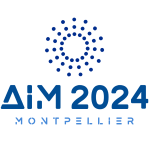Thematics & GTAIM > GTAIM - Use and appropriation of digital toolsGTAIM - Use and appropriation of digital tools
The issues of use and appropriation of digital tools are intimately linked (De Vaujany, 2005; 2011), as a technology or digital tool can only create value if it is used and embedded in the practices of its users (Volkoff, et al., 2007; De Vaujany, 2011; Mawadia et al., 2020). Appropriation is a multiplex and complex concept (Léonardi et al., 2016), its understanding requires the activation of several perspectives (De Vaujany, 2011) and the study of several impacts both technological (De Vaujany, 2011) organisational (Volkoff et al., 2007; Mawadia et al., 2020; Laval and Dudezert, 2020), human (Laval and Dudezert, 2021) and strategic (De Vaujany, 2005). In 2014, Davis, Venkatesh and Morris call on the IS research community to continue research on ICT adoption and use (2014). There is a danger in allowing even a significant body of research to stagnate (ibid.). Thus, the challenges of an ATMG on the use and appropriation of digital technologies are multiple. Firstly, this GTAIM must enable doctoral students at the beginning of their thesis to understand the foundations of this major current of IS research. Secondly, it is for the more experienced researchers to contribute to the development of research on the use of ICT, and more particularly on the appropriation of digital tools, notably by using new methodologies, by turning to research fields that implement emerging technologies (AI, big data, etc.), or by exploring neglected or emerging research fields (pre-digital organisations, Covid-19, telework, etc.). .), and finally, by underlining the role of more embodied dimensions, such as the symbolic (Dudezert, A. et al, 2020; Mawadia et al., 2020) or emotion (Panteli, N. et al., 2021). Finally, a GTAIM on the use and appropriation of digital technologies should contribute to bringing the IS research community closer to the practitioner community, with the strong objective of reducing the famous "rigor/relevance" gap and promoting cross-disciplinary approaches, in particular those bringing IS researchers closer to HR or ethics researchers. Responsible for the GTAIM : Florence Laval - IAE University of Poitiers, CEREGE - flaval@poitiers.iae-france.fr
More information on the GTAIM
References De Vaujany F.-X. (2005), « La gestion stratégique des technologies de l’information : contextualisation de la littérature par une expérience imaginaire », Management International, vol. 9, n°4, pp. 1-16. De Vaujany F.-X. (2011). Revisiter l’appropriation des outils de gestion ; la vision improvisationnelle de Claudio Ciborra, in C Dominguez-Péry (dir.), Valeurs et outils de gestion: de la dynamique d’appropriation à leur pilotage, Paris, Lavoisier: Hermès science, 37-58. Laval, F., Dudezert, A., (2021), Chapitre 2. La transformation digitale des modes de travail : du « crash test » au « new normal », in KALIKA M. et BEAULIEU P. (coord.), Les impacts durables de la crise sur le management, Paris EMS, pp43-65 Laval, F., Dudezert, A. (2020), « La transformation digitale des modes de travail : les leçons de la crise du COVID-19 » in KALIKA, M. (coord.), L’impact de la Crise sur le management, EMS, pp49-60 Leonardi, P.M..; Bailey, D E.; Diniz, E.H.; Sholler, D.; and Nardi, B. A.. 2016. "Multiplex Appropriation in Complex Systems Implementation: The Case of Brazil's Correspondent Banking System," MIS Quarterly, (40: 2) pp.461-473. Mawadia A., Eggrickx A., Chapellier P. (2020), « Transformation du symbolique pour l’appropriation d’un ERP », Systèmes d’Information et Management, vol. 24, n°4, pp. 57-92. Panteli, N., Giaver, F., Engesmo, J. 2021. Emotions in the Digitalised Workplace. Call for Papers, Information Technology & People. 30 April. Rodhain F., Fallery B., Girard A., Desq S.. Une histoire de la recherche en Systèmes d’Information, à travers 30 trente ans de publications. Entreprises et Histoire, Eska, 2010, pp.78-97. Venkatesh, V., Morris, M. G., & Davis, F. D. (2014). Individual-Level Technology Adoption Research: An Assessment of the Strengths, Weaknesses, Threats, and Opportunities for Further Research Contributions. In Computing Handbook, Third Edition: Information Systems and Information Technology (p. 1522). Chapman and Hall. Volkoff, O., Strong, D. M., and Elmes, M. B. 2007. “Technological Embeddedness and Organizational Change,” Organization Science (18:5), pp. 832-848. Walsh, I., Kalika,M. et Dominguez-Péry, C. Les Grands Auteurs en Systèmes d'information. EMS Editions, 2018
|


